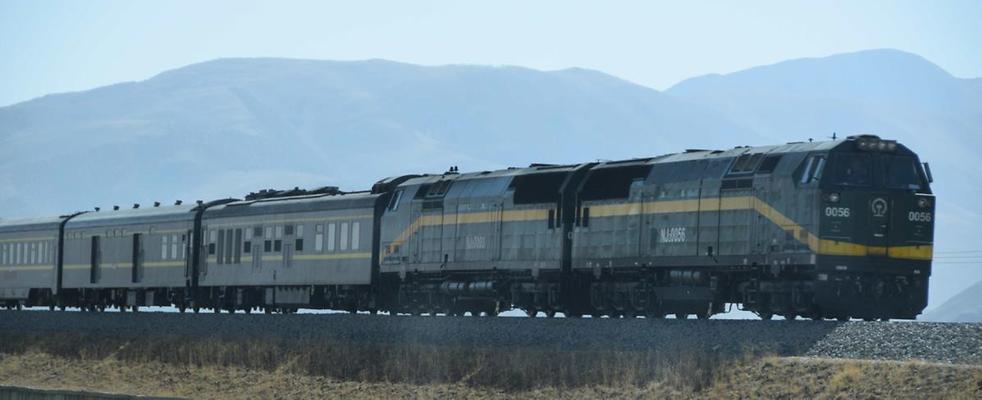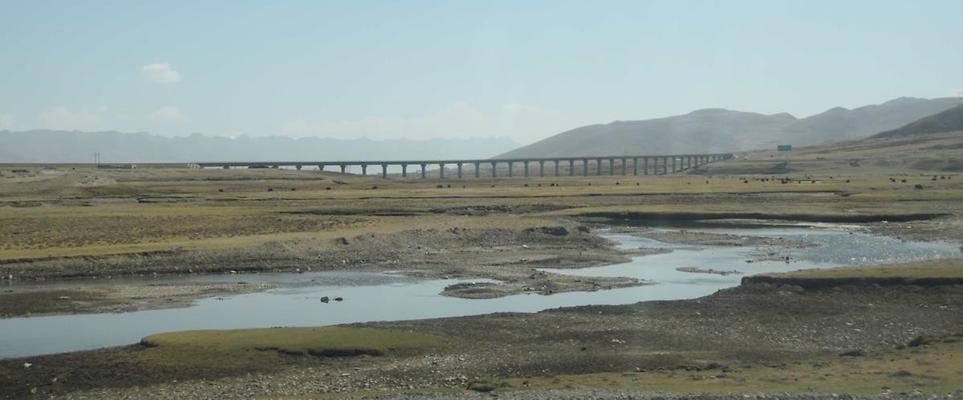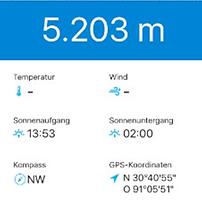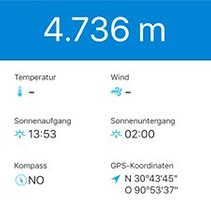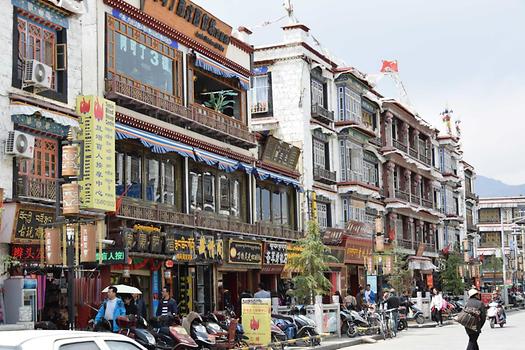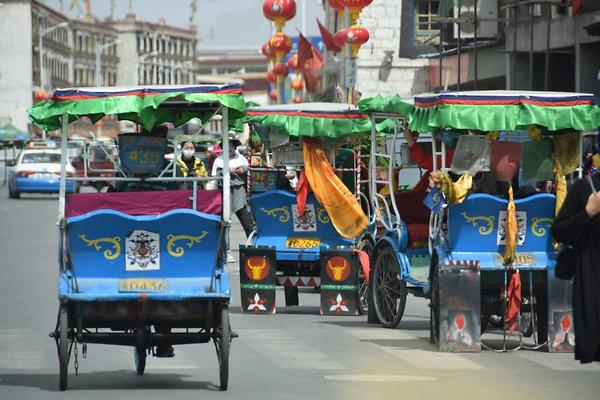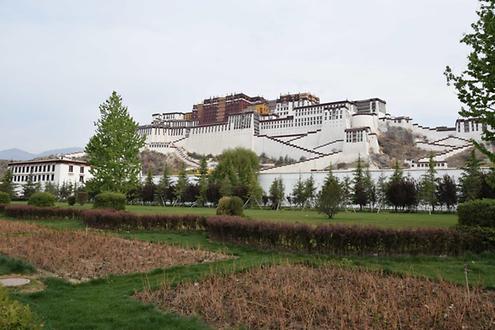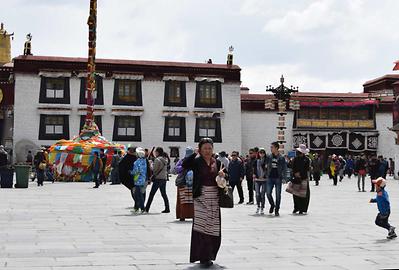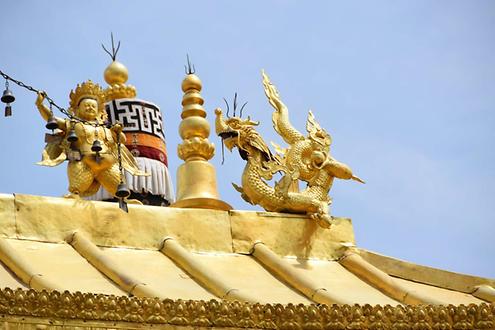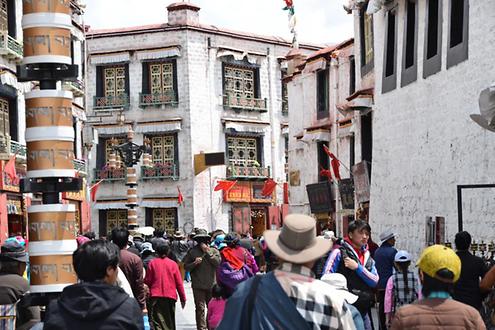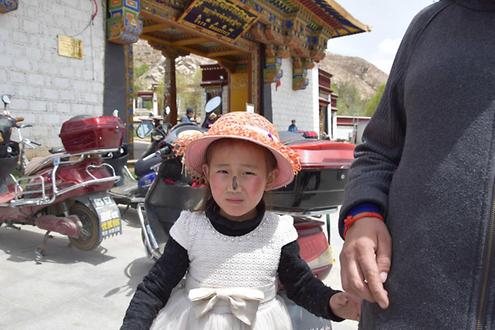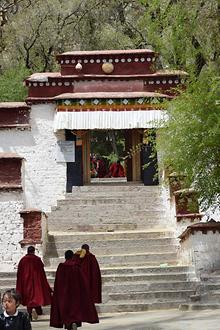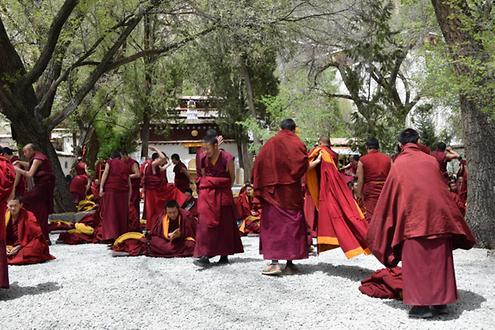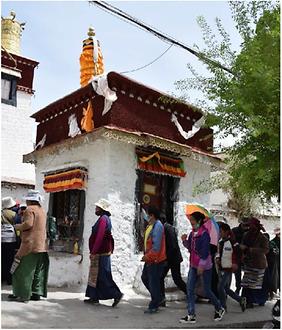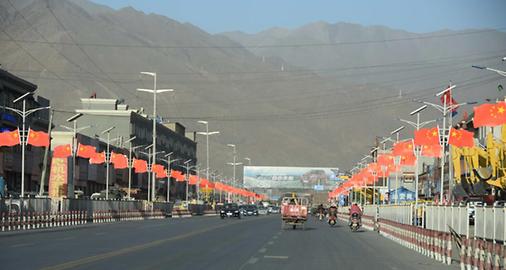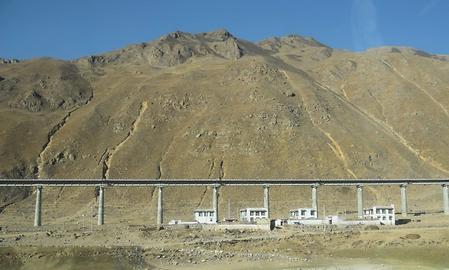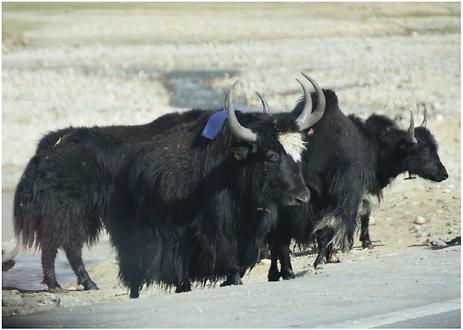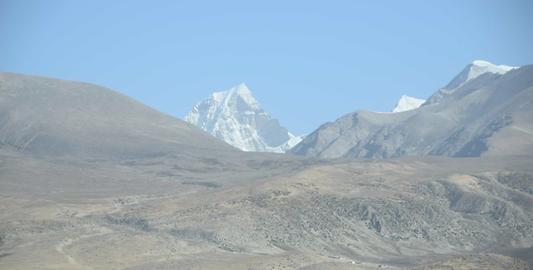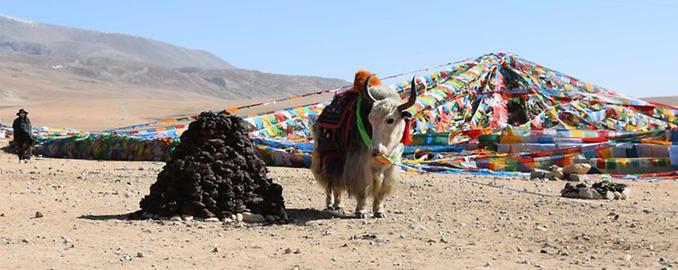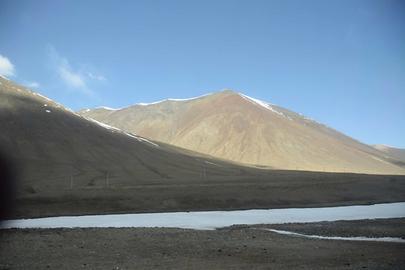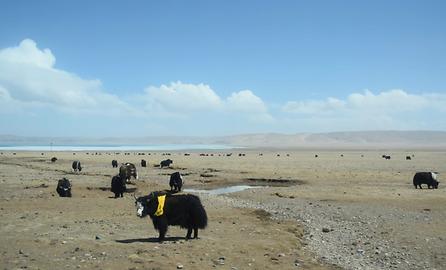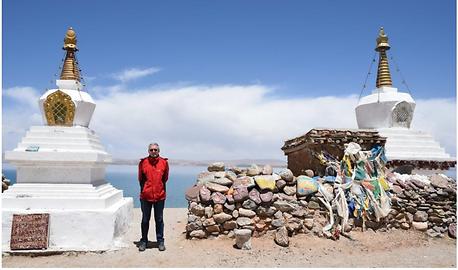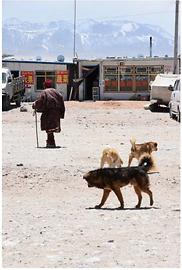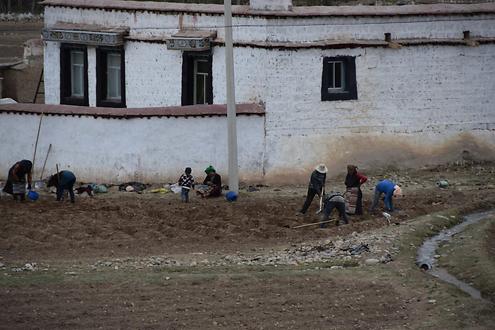Travelling to and in Tibet#
by Johann Günther, 2016
The railroad trip#
I first took the train from Xining to Lhasa Xining, Lhasa , a distance of 2000 km, and leading from an altitude of 2000 m to just over 5000 m and then again "down" to Lhasa. The total travel time was 21 hours. I shared my compartment with 5 Chinese blue-collar people ina so-called "hard sleeper".
I hate group travel, but individual travel is not permitted on that railroad. Friends of mine managed to define a group that happened to just consist of me.
Construction of the 815 km section between Xining and Golmud was completed by 1984. The 1,142 km section between Golmud and Lhasa was inaugurated on 1 July 2006, by Chinese President Hu Jintao: the first two passenger trains were "Qing 1" (Q1) from Xining to Golmud, and "Zang 2" (J2) from Golmud to Lhasa. There was no railway in tibet before. The line passes over the Tanggula Pass. With 5,072 m above sea level it is the world's highest point on a railway.
There are 675 bridges of a total lengt of about 160 km . About about 550 km of track is laid on permafrost.
The passenger carriages used on Lhasa trains are specially built and have an oxygen supply for each passenger. Every passenger train has a doctor. A Passenger Health Registration Card is required to take the train between Golmud and Lhasa. The card can be obtained when purchasing the ticket. Passengers must read the health notice for high-elevation travel and sign the agreement on the card to take the train. Neverthelesss the first death occured already in 2006.
Lhasa#
Lhasa is the second largest city (in population) on the Tibetan Plateau after Xining. At an altitude of 3,490 m, Lhasa is one of the highest cities in the world. However, note that e.g. La Paz in Bolivia is at an elevation of roughly 3,650 m above sea level, making it the highest capital city in the world, and its aiport is located above the 4.000 m mark! Returning to Lhasa, it has been the religious and administrative capital of Tibet since the mid-17th century. It contains many culturally significant Tibetan Buddhist sites such as the Potala Palace, Jokhang Temple and Norbulingka Palaces.The 5th Dalai Lama, Lobsang Gyatso (1617–1682), unified Tibet and moved the centre of his administration to Lhasa in 1642. By the end of the 17th century, Lhasa's Barkhor area formed a bustling market for all kinds of goods. There was nothing one could not buy, or at least order. Such markets and consumerism came to an abrupt end after the arrival of Chinese government troops and administrative cadres in 1950.
Between 1987–1989 Lhasa experienced major demonstrations against the Chinese Government. After Deng Xiaoping's southern tour in 1992, Lhasa was forced to undergo many changes. All government employees, their families and students were forbidden to practice their religion, while monks and nuns were not allowed to enter government offices and the Tibet University campus. Subsequent to the introduction of the economic development policies, the influx of migrants has dramatically altered the city's ethnic mix in Lhasa.
Potala – Palast des Dalai Lama#
The Potala Palace was the chief residence of the Dalai Lama until the 14th Dalai Lama fled to India during the 1959 Tibetan uprising. The Dalai Lama is a monk of the Gelug or "Yellow Hat" school of Tibetan Buddhism, the newest of the schools of Tibetan Buddhism. The 14th and current Dalai Lama is Tenzin Gyatso, born July 6, 1935 in Taktser, in eastern Tibet. In 2001 the 14th Dalai Lama turned his partial power over the government to an elected parliament of selected Tibetan exiles. His original goal was full independence for Tibet, but by the late 1980s he was seeking high-level autonomy instead. He continued to seek greater autonomy from China, but Dolma Gyari, deputy speaker of the parliament-in-exile, stated: "If the middle path fails in the short term, we will be forced to opt for complete independence or self-determination as per the UN charter".Potala palace is now a museum and World Heritage Site. It is named after Mount Potalaka, the mythical abode of the bodhisattva Avalokiteśvara. The 5th Dalai Lama started its construction in 1645. It may overlay the remains of an earlier fortress called the White or Red Palace on the site, built in 637.
The building measures 400 metres east-west and 350 metres north-south, with sloping stone walls averaging 3 m thick, and 5 m thick at the base, and with copper poured into the foundations to make it safe against earthquakes. Thirteen stories of buildings — containing over 1,000 rooms, 10,000 shrines and about 200,000 statues — rise 117 metres on top of Marpo Ri, the "Red Hill", more than 300 m in total above the valley floor.
Jokhang temple#
The Jokhang temple is a Buddhist temple in Barkhor Square in Lhasa. Tibetans, in general, consider this temple as the most sacred and important temple in Tibet. The temple is currently maintained by the Gelug school, but they accept worshipers from all sects of Buddhism. The oldest part of the temple was built in 652. In the following 900 years the temple was enlarged several times, with the last renovation done in 1610 by the Fifth Dalai Lama.Monastery Drepung#
Drepung Monastery, founded in 1416, is located at the foot of Mount Gephel. It is one of the "great three" Gelukpa university monasteries of Tibet. The other two are Ganden and Sera. It is the largest of all Tibetan monasteries and is located on the Gambo Utse mountain, five kilometers from the western suburb of Lhasa.Since the 1950s, Drepung Monastery, along with Ganden and Sera, have lost much of their independence and spiritual credibility in the eyes of Tibetans since they operate under the close watch of the Chinese security services. All three were reestablished in exile in the 1950s in Karnataka Karnataka, India state in south India. Drepung and Ganden are in Mundgod Mungod,India and Sera is in Bylakuppe Bylakuppe, India .
Sera Monastery#
Sera Monastery is located 2 km north of Lhasa and about 5 km north of the Jokhang.The origin of its name is attributed to a fact that the site where the monastery was built was surrounded by wild roses in bloom.The original Sera Monastery is responsible for some 19 hermitages, including four nunneries, which are all located in the foot hills north of Lhasa. The Sera Monastery, as a complex of structures with the Great Assembly Hall and three colleges, was founded in 1419.
During the 1959 revolt in Lhasa, Sera monastery suffered severe damage, with its colleges destroyed and hundreds of monks killed. After the Dalai Lama took asylum in India, many of the monks of Sera who survived the attack moved to Bylakuppe in Mysore, India. After initial tribulations, they established a parallel Sera Monastery with help from the Government of India. There are now 3000 or more monks living in Sera, India and this community has also spread its missionary activities to several countries by establishing Dharma centres, propagating knowledge of Buddhism.
En route to lake Namthso #
Namtso or Lake Nam Namtso lake, Tibet is a mountain lake some 110 km NNW of Lhasa. The lake lies at an elevation of 4,718 m, and has a surface area of 1,920 km2. This salt lake is the largest lake in the Tibet Autonomous Region. Namtso has five uninhabited islands of reasonable size, in addition to two rocky outcrops. The islands have been used for spiritual retreat by pilgrims who walk over the lake's frozen surface at the end of winter, carrying their food with them. They spend the summer there, unable to return to shore again until the water freezes the following winter. This practice is no longer permitted by Chinese authorities.Namtso is one of the most beautiful places in the Nyainqêntanglha mountain range. Its cave hermitages have for centuries been the destination of Tibetan pilgrims. A surfaced road across Laken Pass at 5186 m was completed to the lake in 2005, enabling easy access from Lhasa and the development of tourism at the lake. Settlements in the area include Dobjoi, Donggar and Cha'gyungoinba. The Tashi Dor monastery is located at the southeastern corner of the lake.






